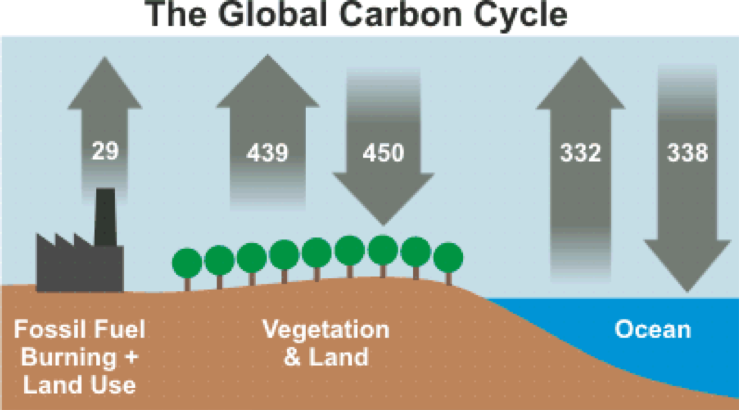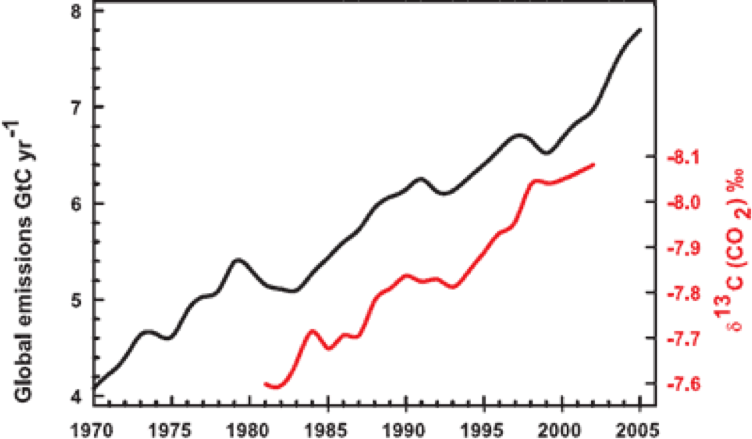Manmade CO2 emissions are much smaller than natural emissions. Consumption of vegetation by animals & microbes accounts for about 220 gigatonnes of CO2 per year. Respiration by vegetation emits around 220 gigatonnes. The ocean releases about 332 gigatonnes. In contrast, when you combine the effect of fossil fuel burning and changes in land use, human CO2 emissions are only around 29 gigatonnes per year. However, natural CO2 emissions (from the ocean and vegetation) are balanced by natural absorptions (again by the ocean and vegetation). Land plants absorb about 450 gigatonnes of CO2 per year and the ocean absorbs about 338 gigatonnes. This keeps atmospheric CO2 levels in rough balance. Human CO2 emissions upsets the natural balance.

About 40% of human CO2 emissions are being absorbed, mostly by vegetation and the oceans. The rest remains in the atmosphere. As a consequence, atmospheric CO2 is at its highest level in 15 to 20 million years (Tripati 2009). A natural change of 100ppm normally takes 5,000 to 20.000 years. The recent increase of 100ppm has taken just 120 years.
Additional confirmation that rising CO2 levels are due to human activity comes from examining the ratio of carbon isotopes (e.g. carbon atoms with differing numbers of neutrons) found in the atmosphere. Carbon 12 has 6 neutrons, carbon 13 has 7 neutrons. Plants have a lower C13/C12 ratio than in the atmosphere. If rising atmospheric CO2comes from fossil fuels, the C13/C12 should be falling. Indeed, this is what is occurring (Ghosh 2003). The C13/C12 ratio correlates with the trend in global emissions.

Source: Intermediate rebuttal written by John Cook.
https://skepticalscience.com/human-co2-smaller-than-natural-emissions-intermediate.htm